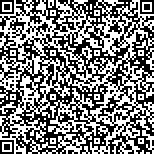下载中心
优秀审稿专家
优秀论文
相关链接
首页 > , Vol. , Issue () : -
摘要

城市地表温度是表征城市下垫面能量收支和局地气候变化的重要参数,一般通过遥感技术手段获取较大范围城市地表温度。由于城市地表呈显著的3维结构,使其呈现出较强的热辐射方向性。而热红外遥感通常提供传感器在特定方向视场中所有组分表面的平均温度(即方向温度),方向温度随传感器观测角度变化,且与城市表面温度的真实分布状况存在差异。为更好地表征城市下垫面与大气的能量交换,常采用“全表面温度”代表城市表面温度特征。目前,“全表面温度”仅在描述城市表面温度的平均状况方面有所突破,但仍然无法体现城市表面温度的高时空分辨率特征,无法满足精细城市热环境评估的需求。本文梳理了城市地表遥感温度从“方向温度”(2维)到“全表面温度”(2.5维)再到“3维表面温度”(3维)的发展脉络,以及目前利用遥感方向观测获取城市地表不同维度温度的进展;厘清了不同维度城市地表遥感温度的差异及其相互关系;阐述了不同维度城市地表遥感温度的应用。在总结存在的问题的基础上,指出了城市地表遥感温度的未来发展趋势:(1)面向应用的城市3维表面温度定义;(2)面向城市3维表面温度重建的立体化观测和(3)3维表面温度产品与城市气候模型的耦合。
Urban land surface temperature is an important indicator of the energy budget of urban underlying surface and local climate change. Remote sensing is an important tool to obtain urban land surface temperature at a large spatial scale. Remarkable urban three-dimensional structure and complex urban surface materials substantially influence the directional variation in upwelling thermal radiance. Thermal infrared remote sensing typically provides an average temperature (i.e., directional temperature) of all component surfaces in a sensor’s field of view at a specific viewing direction. The directional temperature varies with the sensor"s observation angle and differs from the true distribution of urban surface temperature. To better characterize the energy exchange between the urban underlying surface and the atmosphere, the term "complete surface temperature" was proposed to represent the characteristics of urban surface temperature. Currently, "complete surface temperature" has only made a breakthrough in describing the average state of urban surface temperature, but it still cannot reflect the high- resolution spatiotemporal characteristics of urban surface temperature, and cannot meet the needs of fine-scale assessments of urban thermal environment. In this review,we summarizes the development of urban surface remote sensing temperature from "directional temperature" (2-dimensional) to "complete surface temperature" (2.5-dimensional) and then to "3-dimensional surface temperature" (3-dimensional), as well as the current progress in using remote sensing directional observations to obtain urban surface temperature in different dimensions; Clarifies the differences and interrelationships of in different dimensions; The application of remotely-sensed urban surface temperature in different dimensions was also elaborated. On the basis of summarizing the existing problems, the future development trend of remotely-sensed urban surface temperature is pointed out: (1) definition of 3-dimensional urban surface temperature for different application purposes; (2) Stereoscopic observation for the reconstruction of 3-dimensional urban surface temperature and (3) coupling of 3-dimensional surface temperature products and urban climate models.

